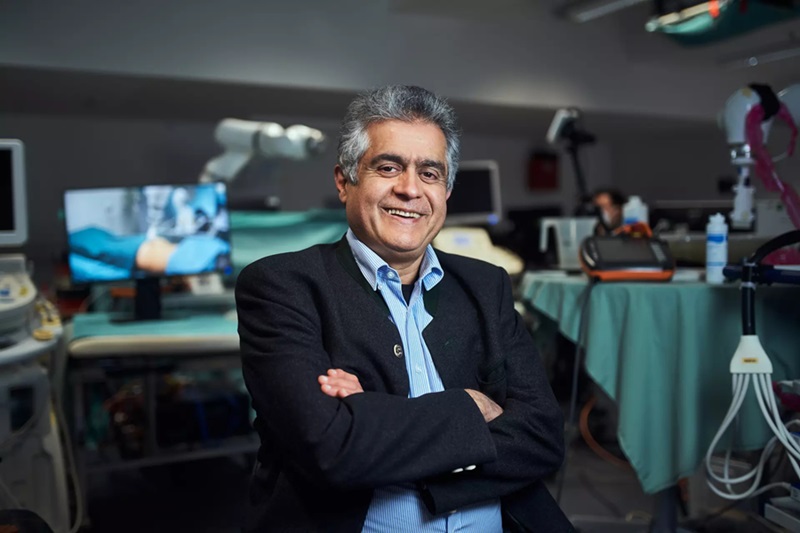Robotic Ultrasound Systems to Assist Doctors during Surgery
Posted on 31 May 2024
Ultrasound technology was first introduced in medical diagnostics 60 years ago, with the introduction of the first remotely controllable ultrasound machine occurring 20 years ago. Now, the medical field is on the brink of another significant advancement—the advent of autonomous ultrasound systems. Current research indicates that robotic ultrasound systems capable of conducting routine examinations autonomously and assisting doctors in the operating theater could greatly simplify the daily routines of medical professionals.
Professor Nassir Navab from the Technical University of Munich (TUM, Munich, Germany) leads a unique lab where experts in artificial intelligence, computer vision, medicine, and robotics collaborate. The initial prototypes from Navab’s lab demonstrate how these cutting-edge technologies can be applied in medical settings and surgical environments. A novel robotic system developed in his lab allows for ultrasound examinations to be conducted without a doctor's direct involvement. This system features an ultrasound probe mounted on a robotic arm, which can autonomously perform scans on a patient's forearm or abdomen. It automatically generates 3D images of internal vessels and measures physiological parameters like blood flow velocity, thus freeing doctors from routine examination tasks. Additionally, the system can detect abnormalities, such as vessel constrictions, providing doctors with immediate results to focus more on patient care and consultation.

While routine ultrasound examinations can be autonomously conducted and standardized for research purposes, this autonomous technology also finds application in surgical environments, such as during spinal surgeries. In these scenarios, Prof. Navab’s team employs a "shared control" strategy. Surgeons have the option to use the ultrasound in the traditional manner or rely on the autonomous function to keep their hands free during procedures. For instance, the system can autonomously provide images of a specific region when a doctor is performing injections into a vertebral joint, without interfering with the surgical process. The system also uses machine learning to review the images for any signs of vertebral fractures. Autonomous robotic ultrasound systems bring numerous advantages, including the ability to produce 3D ultrasound images, ensure comparability of data, and perform health scans without the need for medical personnel on-site.
Before these robotic systems are operational, Prof. Navab emphasizes the importance of "confidence-building measures" to acclimate patients to the robotic system. His team is investigating ways to facilitate human-machine interaction to create a comfortable and safe experience. The introduction process includes an animated demonstration of the examination procedure, detailing the robot’s movements. This helps patients understand what to expect during the scan. To build further trust, the robot demonstrates its functionality through simple, non-critical interactions, like a symbolic high five, showing patients that the system is aware of its surroundings and can adjust to movement. Such precautions ensure that the robot, as it applies gel and moves the ultrasound probe across the abdomen with precise movements and pressure, is safe and non-threatening.
"People are already measuring their pulse, body temperature and blood pressure with their smartwatch or other digital applications," explained Prof. Navab. "They will certainly be open to having ultrasound examinations carried out with the help of robotic systems."
Related Links:
TUM














